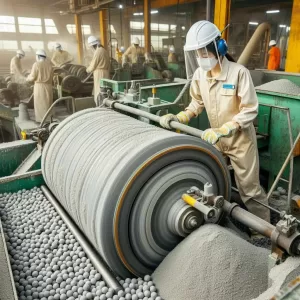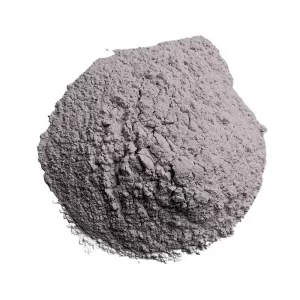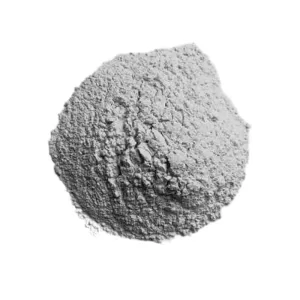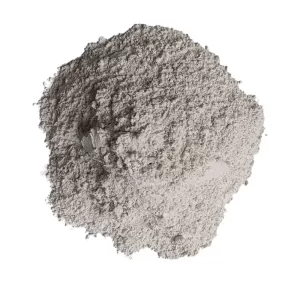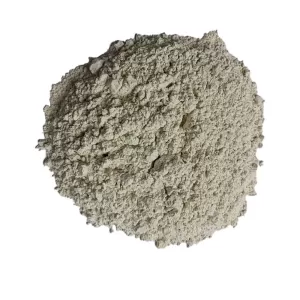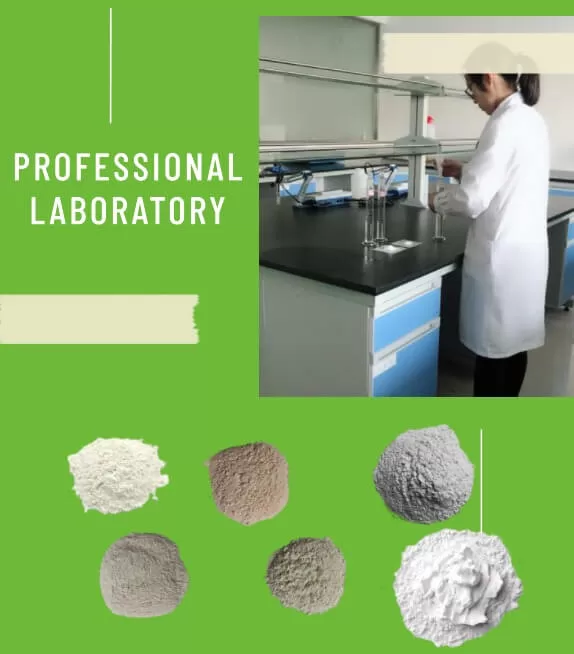What kind of animals can be fed with bentonite?
1. Ruminants Applied to fatten cattle can promote cattle health and improve feed efficiency.
② Swine The addition of 2% bentonite to feed can increase pigs’ growth rate and feed utilization. Research shows that the addition of bentonite can increase pigs’ weight by 3.7% and body length by 1.6%.
③ Bird Applied to laying hens can improve the egg production rate, egg weight, eggshell thickness, feed utilization, and egg iron, copper, cobalt, manganese, and essential amino acid content. Applied to broilers, it can promote weight gain and reduce the effect on chickens when feeding feed due to aflatoxin.
④ Rabbit The mortality rate can be significantly reduced, and feed remuneration increased.
⑤ Environment It can reduce the odor of feces in the house and improve the environmental hygiene of the house.
[Additive amount
In the feed, bentonite is generally 1% to 3%.
Application effect] Add bentonite in the feed to feed laying hens, improve the egg production rate of laying hens, egg weight, and feed conversion rate, reduce broken eggs, and increase economic benefits, which have obvious effects.
[Application effect
Add bentonite in the feed to feed laying hens to improve the egg production rate, egg weight, and feed conversion rate, reduce broken eggs, and increase economic benefits, which have obvious effects.
What is the role of montmorillonite in feed?
Montmorilonita can increase the appetite of poultry and livestock, help digestion, regulate the balance of the body, improve immune function, disease prevention, and health care.
(1) Supplementary minerals and essential elements Animal experiments and other studies have confirmed that montmorillonite contains a variety of biological functions necessary for the growth and development of livestock and poultry and a variety of different animals, macronutrients, and trace elements, in addition to Si, Al, but also contains Fe, Zn, Cu, K, Na, Ca, Mg, P, I, Se and other macronutrients and trace elements and biologically active substances, which can be supplemented to the nutrition of animals. These elements can supplement the nutrition of animals and are also the components of biological enzymes, hormones, and other biologically active substances, which can make the activity of biological enzymes, hormones, or immune response change significantly, or in the form of exchangeable ions and soluble salts, which animals can easily absorb.
(2) Mold removal, detoxification, and intestinal protection According to the cation exchange capacity of montmorillonite and the electronegativity of non-uniform charge distribution, a hydrated film with polarity can be formed between the layers of montmorillonite crystals, and viruses and pathogens are also very polar. The two are combined through the H-O-H van der Waals force rather than the chemical bonding to draw the viruses, pathogens, and the toxins they produce in the digestive tract between the mineral layers, which has a strong immobilization and inhibition effect.
The adsorbed mycotoxins and bacterial toxins are excreted with feces, which reduces the intestinal absorption of these toxins, thus avoiding the infringement on animals. The large amount of dispersed liquid in the digestive tract causes montmorillonite to form a gel, which enhances the covering ability and protective effect. By inter-binding with mucus glycoproteins, it repairs and improves the defense function of the mucosal barrier against attacking factors from both qualitative and quantitative aspects. Therefore, it has a good effect on diarrhea, dysentery, and other digestive tract inflammation.
(3) Feed improver Due to the unique water-absorbing swelling, high dispersibility, suspension, thixotropy, lubrication, and adsorption, montmorillonite can improve the palatability and looseness of feed, slow down the speed of the feed through the digestive tract, increase the surface area of the reaction of the nutrients themselves, but also increase the surface area of the nutrients and the mucous membranes of the digestive tract contact, so that the nutrients are absorbed more fully, thus improving the feed utilization. Feed utilization. Secondly, it can reduce the moisture in poultry feces, keep the pen dry, and reduce the morbidity rate.
How to measure the concentration of montmorillonite in feed
Concentration of montmorillonite in feed = mass of montmorillonite ÷ (mass of montmorillonite + mass of feed) x 100%.
The formula explains that the Montmorillonite mass is the weight of the montmorillonite added to the feed. Feed mass is the weight of the feed before the addition of montmorillonite, not the total weight after mixing.
What is the appropriate concentration of montmorillonite?
This can be determined according to the actual requirements, such as to prevent moldy feed per ton of feed added 1-2.5 kg of montmorillonite, the concentration of control in the 0.09%-0.24% between; for the existing moldy phenomenon of the feed, per ton of feed to add 2-4 kg, the concentration of control in the 0.19%-0.39% between; to prevent diarrhea of livestock, add 2-3 kg of montmorillonite per ton of feed, the concentration of power in the 0.19%-0.39% between. Add 2-3 kg per ton of feed; the concentration is controlled between 0.19%-0.29%, and the above dosage is for your reference only.
What is the standard of montmorillonite content in feed additives?
The content of montmorillonite in bentonite is more than 100% – data calculation is possible, practically impossible! Because the blue absorption (MB) conversion method determines the montmorillonite content, the conversion factor of 0.442 can not be used to calculate the actual content accurately.
Since the blue absorption and cation exchange capacity (CEC) is positively correlated with the montmorillonite content, the montmorillonite content can be obtained by determining the blue absorption or CEC of the raw ore, the raw ore purified sample, and the purified impurity minerals, and then weighting or comparing the results to obtain the montmorillonite content of the raw ore, thus eliminating the effect of bentonite properties and genus on the determination results.
The improved results show that CEC can also be used to determine montmorillonite content regardless of the weighted or ratio method; however, the weighted method is more reasonable. The purity of montmorillonite and impurity minerals, as well as their blue absorption and the precision and accuracy of CEC, are the keys to the accuracy of the weighted method; the ratio method is suitable for the determination of fine-grained or purified minerals with high purity. Suggestions: Correct and accurate preparation of methylene blue reagent Accurate measurement of 0.2 grams of soil Determination of titration endpoints Conversion of formulas Coefficients to 0.49
How to add montmorillonite correctly to feed
It is necessary to add montmorillonite into the feed evenly, but because of the small amount of montmorillonite added, generally use the pre-mixing method, that is, 3-10 times of the feed ingredients and montmorillonite (or mold remover) mixed in advance, after mixing the mixture of raw materials and then mixed with the feed ingredients will be easy to mix evenly.






